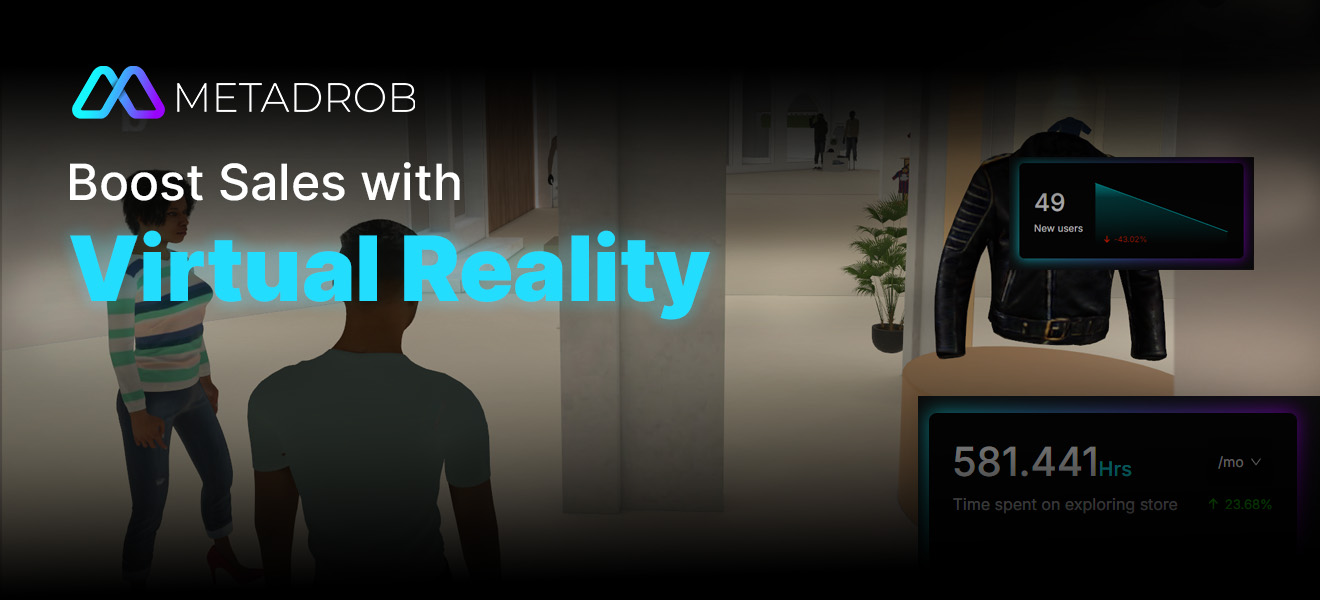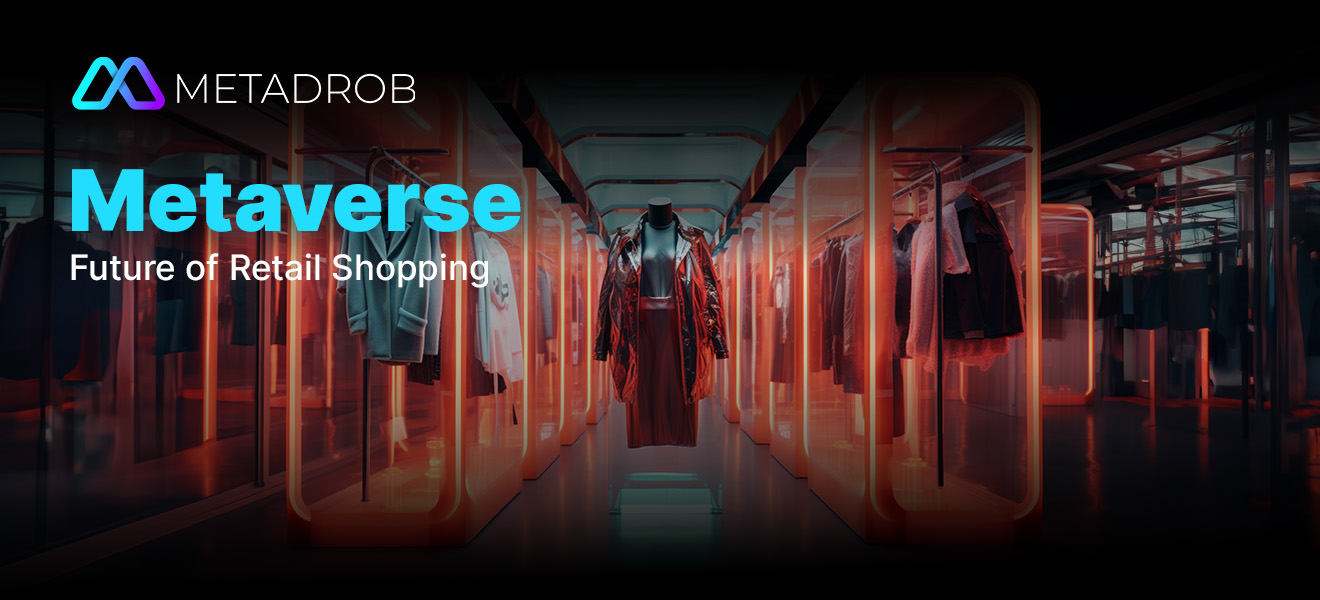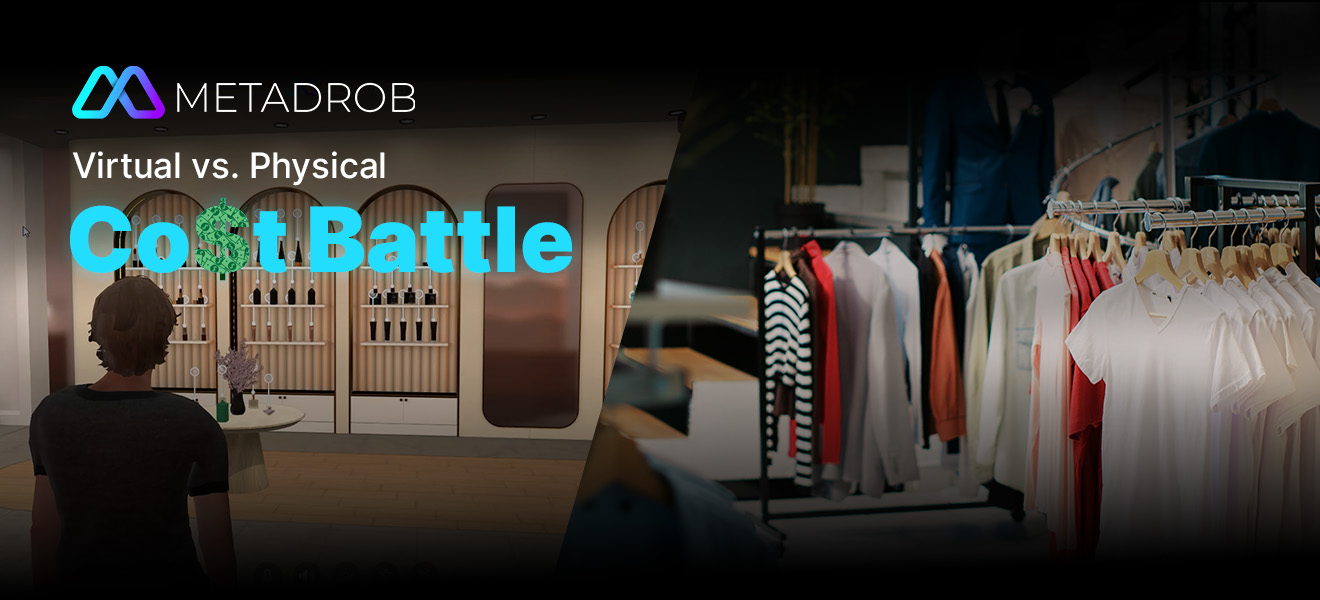Does Your Business Need a Virtual Store to Stay Competitive?

Introduction
Thanks to technological advancement, retail customer experiences are evolving at a fast pace. Originally created for gaming and entertainment, virtual reality is now beginning to enter the retail sector. Virtual reality (VR) provides a unique, engaging method to look at products and services by fully engaging customers in virtual worlds.
However, does this advanced technology (VR) enhance sales? This article will focus on the prospects of how virtual reality (VR) could enhance customer satisfaction, improve sales conversion rates, and change consumer behavior.
We will evaluate how virtual reality (VR) might boost product visualization, establish virtual showrooms, and generate tailored shopping experiences. In the end, we need to understand how virtual reality can really revolutionize our shopping experience and increase our sales.
Understanding VR in Shopping
The shopping experience has changed completely because of virtual reality (VR), which presents immersive and interactive features. Various VR shopping experiences consist of:
- Product Visualization: Users are able to view items closely from different standpoints and even put on apparel and accessories virtually.
- Virtual Showrooms: Merchants can create three-dimensional, lifelike settings for customers to study and link with the available merchandise.
- Guided Shopping Tours: Virtual reality (VR) can give individualized shopping experiences by steering clients through carefully chosen alternatives based on their preferences.
VR offers numerous benefits for both consumers and retailers:
- Improved Customer Experience: With virtual reality, shopping changes into an innovative and memorable experience, which creates happier customers.
- Better Decision-Making: To help customers better visualize products in their real environments, virtual reality (VR) enhances the quality of their purchasing decisions.
- Lower Returns: By delivering a more true-to-life image of items, virtual reality (VR) can decrease returns on merchandise.
- Cost Savings: Companies can reduce expenses by using virtual reality (VR) to prevent the need for both physical showrooms and inventory.
However, there are also potential drawbacks to consider:
- Cost: Integrating VR technology may be costly, especially for smaller businesses.
- User Experience: Popular usage of VR headsets can lead a variety of users to experience either discomfort or symptoms of motion sickness.
Impact of VR on Consumer Behavior
With virtual reality (VR), customers can buy in an entirely new way, positioning them in a simulated environment. A variety of ways show that the shopping trip can greatly benefit from this immersive experience.
Shopping first becomes more engaging and varied with VR. Consumers can try out goods online, check out multiple styles, and see items positioned in their own living spaces. This degree enhances interaction, which can enhance client satisfaction and refine their understanding of the products.
In addition, VR greatly affects customers’ mental health. The astonishing nature of virtual reality engagement produces emotionally compelling experiences that spur consumers to connect with companies and products. This kind of sentimental connection can affect judgments regarding buying choices and leave an impression that continues.
VR can affect favorably the way customers evaluate a product. With virtual reality (VR), buying decisions can derive advantages from a detailed and realistic view of products, assisting in fit, material evaluation, and general visual attractiveness. This situation might produce a fall in customer regret while improving confidence in their decisions to buy.
So, in a nutshell, virtual reality (VR) provides a purchasing experience that is more immersive, engaging, and emotionally striking, which may greatly change customer actions. The future of retail is likely to see a major effect from VR technology as it keeps progressing.
VR and Sales Conversion Rates
While VR delivers a special method of shopping, does it also boost sales? Research has shown that VR-enabled shopping can substantially augment conversion rates when compared to conventional techniques. Retailers may boost customers’ chances of purchasing by creating a more engaging and personalized experience within a virtual environment.
Still, several things can affect the success of virtual reality in driving sales. The category of products is of great importance. Virtual reality demonstrates its usefulness, particularly for issues such as furniture, home décor, and apparel, which are difficult to understand or experience in a typical setting. We need to take into consideration the intended audience.
Those under 25 years old are more likely to welcome virtual reality shopping experiences because they are more habituated to technology. A variety of elements affect the capability of virtual reality to boost sales, such as the demographic characteristics of the audience and how well the product fits.
VR and Customer Satisfaction
In the retail domain, virtual reality (VR) serves as a feature that drives customer engagement in virtual stores. This is an extraordinary opportunity to raise client happiness. It’s arguable that VR could design shopping experiences that cater to specific individual preferences and, in doing so, enhance customer satisfaction by delivering personalized experiences.
For example, customers can try clothing position furniture online in their homes, which reduces the possibility of buying items that don’t fit or aren’t visually appealing and lessens returns. Also, VR is very important in building consumer advocacy and brand loyalty. Immersion events create a deep impact and serve to improve the relationship between customers and businesses.
Clients are more disposed to function as brand advocates, and this includes advising others on the business and making additional purchases when they have a fun virtual reality shopping experience. Insights about the ways VR impacts user happiness are available from user ratings and feedback. Many claim that using virtual reality (VR) provides a realistic view of goods, resulting in increased confidence in their purchases.
Future Trends and Opportunities
As the technology related to VR upgrades over time, we should expect a rise in both interactive and engaging shopping experiences. Virtual shopping is about to feel more real thanks to upcoming trends that include eye-tracking and haptic feedback, which will refine both presence and touch. Also, adding AI and machine learning functions will allow the opportunity for personalized recommendations, as well as virtual try-ons, thereby improving personalization in the shopping experience relative to personal preferences.
Not only does virtual reality (VR) enhance showrooms and product display, but it can also completely modify a range of retail functions. Virtual real estate tours, consultations in interior design, and displays of fashion are some of the things it might be used for. This presents brands with innovative channels to connect with consumers and to display their offerings creatively.
However, there are a number of hurdles to the general acceptance of VR in retail. Development in this sector may meet hindrances because of elements including price, accessibility, and technological limitations. In order for VR to gain widespread adoption, a perfect and intuitive experience is necessary. Success in future VR shopping relies greatly on tackling privacy issues and fixing all technical challenges.
Conclusion
To sum up, the immersive and engaging features that virtual reality offers have the potential to transform the purchasing experience completely. Even while research has demonstrated that virtual reality (VR) can improve consumer engagement and decision-making, there is still much to learn about how VR can really affect sales.
However, VR may be a useful tool for companies trying to stand out from the competition and offer distinctive client experiences. With its knowledge of VR technology and retail solutions, Metadrob can help companies incorporate VR into their e-commerce platforms with ease, which will increase sales and cultivate consumer loyalty.
Hurry up and book a free demo! We just have limited demos available, so tap into the power of revolution before they are gone!
Connect with Metadrob
Ready to take the first step towards unlocking opportunities, realizing goals, and embracing innovation? We're here and eager to connect.

+91 966-004-4020





